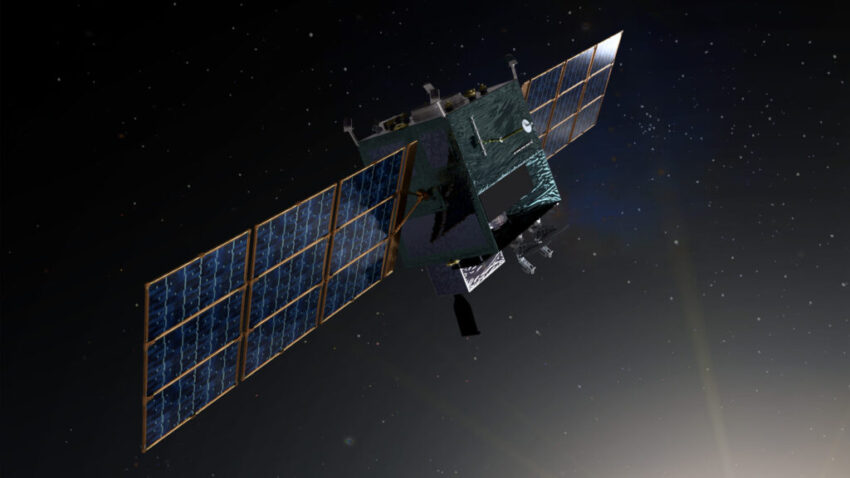As part of the Next Generation Overhead Persistent Infrared System (Next-Gen OPIR), two polar satellites will provide coverage over the northern hemisphere. (Graphic: Northrop Grumman)
WASHINGTON — The Space Force’s primary acquisition command has created two new subordinate organizations, called “Systems Deltas (SYDs),” to oversee development programs: the first for missile warning and tracking, the second for space-based sensing and targeting.
The move, announced Wednesday, is part of a long-running effort by Space Systems Command (SSC) to reorganize acquisition programs along mission area lines, syncing up with the structure of the service’s main operational arm, Space Operations Command (SpOC).
“Through unity of effort, the Space Force’s System Delta framework allows us to streamline the work between acquisitions and operations accomplished through intimate collaboration with our Mission Delta counterparts across the field commands,” said SSC Commander Lt. Gen. Philip Garrant.
The new deltas (the equivalent of Air Force wings) will consolidate “program offices that design, develop and deliver mission systems under a force design structure for acquisitions,” the SSC announcement explained. Both of the new SYDs fall under Space Force Program Executive Officer for Space Sensing, a slot currently held by Col. Robert Davis.
“SYD 84 is responsible for Space-Based Missile Warning and Tracking, which responds to emerging threats such as hypersonic weapons. … It is directly linked to its sister SpOC Mission Delta 4,” the release said. Col. Stevie Medeiros took over command of SYD 84 in a ceremony on July 10.
SSC is in the midst of developing the Next Generation Overhead Persistent Infrared (Next-Gen OPIR) satellite constellation to replace the legacy the Space-Based Infrared System (SBIRS) birds in geosynchronous Earth orbit. It also is in the early stages of a new program to design and build a missile tracking constellation in medium Earth orbit optimized to track hypersonic missiles under the Resilient Missile Warning and Tracking (MWT) Medium Earth Orbit (MEO) program.
Meanwhile, “SYD 810 is responsible for the Space-Based Sensing and Targeting (SBST) mission area, which includes the Environmental Monitoring and Tactical Sensing portfolio.
“It provides global terrestrial cloud forecasting and theater weather imagery data, for timely mission operations, planning, and execution,” according to the SSC announcement. “This SYD also provides critical and actionable environmental surveillance to military operations. It is directly linked to its sister SpOC Mission Delta 2, as well as Space Force Component Commands in multiple theaters.”
Col. Dane Bannach was assigned as SYD 810 commander also on July 10, the release said.
SSC is responsible for the Space Force’s joint program with the National Reconnaissance Office (NRO) to develop Ground Moving Target Indicator (GMTI) satellites that track and provide targeting vectors for enemy vehicles and ships, largely replacing the Air Force’s aging fleet of E-3 Sentry Airborne Warning and Control System aircraft.
The command further is pursuing a new(ish) effort to explore development of space-based Air Moving Target Indicator (AMTI) sensors to replace the Air Force’s aging E-3 Sentry Airborne Warning and Control System aircraft.
Click this link for the original source of this article.
Author: Theresa Hitchens
This content is courtesy of, and owned and copyrighted by, https://breakingdefense.com and its author. This content is made available by use of the public RSS feed offered by the host site and is used for educational purposes only. If you are the author or represent the host site and would like this content removed now and in the future, please contact USSANews.com using the email address in the Contact page found in the website menu.








